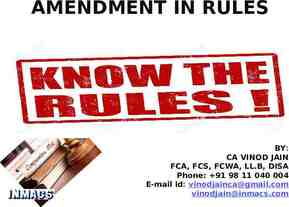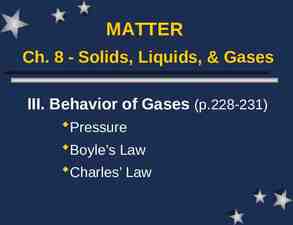Safety Training For SUNY Oswego Summer Staff
57 Slides7.16 MB
Safety Training For SUNY Oswego Summer Staff
Agenda Hazard Communication Confined Space (Material) Safety Data Sheets Lockout/ Tag Out Asbestos Fall Protection/Ladders/Scaffolds Personal Protective Equipment Slips, Trips, Falls Fire Safety Bloodbourne Pathogens Heat Stress General & Questions https://www.osha.gov/dep/fatcat/fy15 federal-state summaries.pdf
Facility Services Org Chart AVP EHS MP M&O
Facility Services Safety
FS Reporting Safety Concerns AVP EHS MP M&O
Format for Safety Topics Regulatory Overview What you need to know
Hazard Communication Regulations “Employees have both a need and a right to know the hazards they are exposed to when working” Components of HAZCOM – OSHA 29CFR 1910.1200 Written program - https:// www.oswego.edu/facilities-services/programs-and-policies Labeling of Chemical Substances Chemical Inventory Safety Data Sheets Hazard Identification Employee information and training
Hazard Communication What you need to Know SOME EXAMPLES OF HAZARDS ARE: Corrosive (Acid/Base) – Irritates or burns skin or eyes Toxic – May cause illness or death Flammable - Readily catches on fire Reactive – May react dangerously when mixed with incompatible substances Compressed gas –Extreme pressure may be released Carcinogen – May cause cancer
Hazard Communication What you need to Know Routes of entry Ingestion, Inhalation, Absorption, and Injection All containers must be labeled Health Hazards – acute vs. chronic Safety Data Sheets New GHS system has 16 sections https:// www.oswego.edu/facilities-services/environmental-health-and-safety
Any Questions Understanding SDS?
Asbestos Regulated by: OSHA – 29 CFR part 1910.1001 EPA – 40 CFR part 763 DOT – 49 CFR part 173 DEC – 6 NYCRR part 364 DOH – 10 NYCRR part 73 DOL – 12 NYCRR part 56
Which of these is Asbestos?
Asbestos The Good, The Bad, The Ugly, The Good Strong, durable mineral resistant to fire and chemicals Like many facilities built in the late 60’s early 70’s, present in some older buildings on campus Long term exposure can cause asbestosis, lung cancer, mesothelioma Latency period is 15-40 years We have a management plan
Asbestos Regulated in materials 1% asbestos Can only be confirmed in a certified laboratory Asbestos fiber 100 times smaller than the diameter of a human hair Can be suspended in the air for up to 3 days If the material is in good condition e.g. sealed, painted, it is not a risk to your health. Two forms: Friable – easily pulverize in you hand (insulation) Non-Friable – unable to pulverize in your hand (floor tile)
KNOW YOUR SUSPECT MATERIALS Floor Tiles Wall and Ceiling Plaster Joint Compounds Mastic (glue) Ceiling Tiles Roofing materials Caulk Wall and Ceiling Textures Spray-on Insulation Pipe Insulation
Joint Compound
Spray-on Fireproofing
Signage
Custodial Cleaning Activities Floors Allowed Wet scraping wax removal Wet stripping/buffing Waxing NOT Allowed Dry buffing Sanding, cutting, grinding Removal of loose tiles (STOP: Contact Supervisor)
Custodial Cleaning Activities Textured Ceilings Allowed Light wet wash Item removal if paint does not lift Routine lamp maintenance Smoke alarms (Maint. team only) NOT Allowed Scraping loose material (STOP: Contact Supervisor) * If you see material that may have come from the ceiling, let your supervisor know.
Custodial Cleaning Activities Walls Allowed Washing painted surfaces Light wet scraping Adhesive hook removal (STOP if paint lifts, Contact Supervisor) NOT Allowed Digging into substrate, gouging, sanding
Asbestos Exposure – by the Numbers OSHA Permissible Exposure Limit – 0.1 f/cc Breathing Rate – 10 L air/min (8 L at rest 60 L during a run) X 60 min 600 L/hour X 8hr shift 4800 L/day Convert to cubic centimeters X 1000 4,800,000 cc/day X OSHA PEL of 0.1f/cc 480,000 f/day
Any Questions on Asbestos?
Personal Protection Equipment OSHA – 29 CFR 1910, 1915, 1926 Eyes/ face Head Foot Hand Hearing Respiratory
Basic PPE Office Grounds Sturdy leather work boots/shoes & long pants Custodial Business casual Closed-toed shoes. No tank tops. Head phones – At the discretion of the supervisor.
Noise in Your Work Environment OSHA Designated Exposure Limits 85 dBA - Action Level for HCP 90 dBA - Permissible 8-hr. TWA Two-Foot Rule (Arms Length) Wear Hearing Protection when doing loud tasks – ask your supervisor where to get some earplugs
Grounds – Hazard Analysis for Trimmer (Weed-Eater) Eyes (glasses) Heat exhaustion (fluids) Ears (plugs) Sun (sun screen) Feet (work shoes) Traffic (vest) Legs (long pants) Bees/Ticks (repellent) Head (hard hat) Poison Ivy (clothing) Vibration (gloves/ alternate hands) Pollen (dust mask) Lightening
Custodial – Hazard Analysis for Cleaning Eyes (splash goggles) Hands (gloves) Nitrile for chemicals Canvas or leather for general purpose Heat Exhaustion (fluids) Not PPE, but ensure lifting with legs, not back
Fire Safety Annual testing of Fire Alarms, Detectors, Sprinklers Do you still need to evacuate if there is a Drill? YES!
Fire – Basic Systems
Fire Emergency Response Rescue – rescue other in immediate danger Alert – Shout Fire! Or Pull fire alarm and Dial Emergency Phone number 312-5555 from a cell or 911 from a campus phone Contain – Close all doors Evacuate – not Extinguish. Get out!
Fire – Blocked Exit
Heat Stress Exposure to heat can cause illness an death. Risks High temps, low breeze, direct sun Heavy physical labor Low water intake Recent alcohol or caffeine consumption
Heat Exhaustion Symptoms Headaches, dizziness, fainting Weakness, cramps Thirst, nausea, or vomiting
Heat Stroke Symptoms Confused, unable to think clearly, pass out, collapse, or seizures May Stop Sweating – Emergency!
Heat Stress Protection Know symptoms; monitor yourself and others Drink plenty of fluids before you are thirsty. Heat Index 100o F, have a pint of water per hour. Minimize direct sun Avoid beverages containing alcohol or caffeine Wear lightweight, light colored, loose-fitting clothing
Confined Space OSHA 29CFR 1910.146 Area not designed for continuous occupancy Limited egress Dangerous atmosphere Extraction plan and Attendant Examples: Crawl spaces Manholes Ductwork
Confined Space Summer Students: Do not Enter !!
Excavating/Trenching OSHA 29CFR 1926.651 Excavations 4’ require: Competent Person Trench box or sloping Means of Egress
Excavation/Trenching Summer Students: Do not Enter or go near trench!
Lockout/ Tagout OSHA 29CFR 1910.147 Control of Hazardous Energy Electrical, mechanical, thermal, hydraulic, gravity Isolates the energy during service
Lockout/ Tagout NEVER Remove! Find a tag on floor, report it!
Fall Protection OSHA 29CFR 1926 Scaffolds Extension Ladders Step Ladders Slips, Trips, Falls
Scaffolds Summer Students not allowed on scaffolding without additional training. Coordinate with supervisor if necessary.
Ladder Basics Ladders must be inspected before each use. Face the ladder when ascending or descending. While climbing, maintain three points of contact at all times. Keep your body centered on the ladder. Never let your belt buckle pass either side rail. Avoid setting ladders up in high traffic areas or barricade the area around ladder. Do NOT use metal or aluminum ladders near exposed energized electrical equipment.
Extension Ladders Inspect for good condition Ensure placement has good footing 4:1 Ratio Falls — 349 out of 874 total deaths in construction in CY 2015 (39.9%)
Step Ladders Only use in the fully open position on firm level ground. Do not use a stepladder that is folded or in a leaning position. Never sit/stand on the top two rungs. Consider work height when selecting a stepladder Falls — 349 out of 874 total deaths in construction in CY 2015 (39.9%)
Step Ladders
Slips, Trips, Falls Eliminate Hazards – If you see something, correct it or talk to your supervisor Common Sense Warn others Don’t climb on shelving or chairs
Slips Weather conditions and cleaning may cause floors to be wet. Clean up spills immediately Use signage and caution tape
Trips Eliminate clutter, cords Be aware of uneven surfaces
Bloodbourne Pathogens OSHA 29CFR 1910.1030 Pathogens are infectious microorganisms in human blood that can cause disease – Hepatitis B, Hepatitis C, and HIV Regulation developed mainly for healthcare personnel and first responders
Bloodbourne Pathogens Training provided to full time Custodial and Plumbing staff, NOT Summer Students Program requires a series of shots and medical documentation Summer Student Custodial staff will still be able to clean bathrooms but are prohibited from cleaning up visible blood. Contact supervisor if you encounter visible blood. Do not treat someone who is bleeding
Vehicles – Seat Belts
Facility Services Safety It begins with YOU!
Questions EHS – 110 Lee Hall x 3157






























































